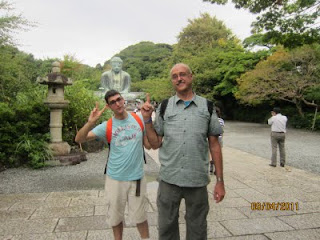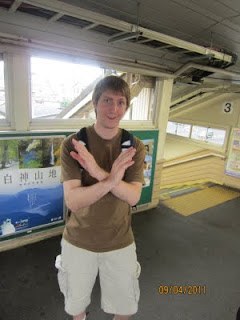
We took the bus from the Mausoleum area to the Presidential Palace, where according to wiki "Front gate of the Palace, taken in 2008, displays the sign "Office of the President" (總統府). Prior to 1947, the sign read "National Government" (國民政府)."
http://en.wikipedia.org/wiki/Presidential_Palace_(Nanjing)

When I was a kid, and before the opening of China with visits by Kissinger and Nixon in the late 1970's, the Republic of China was the only one we learned about in the US. The flag of the Republic was associated with the KMT that left the Chinese Mainland in 1949. Here from wiki about the palace and its history.
"After the Xinhai Revolution in 1911, Sun Yat-sen was sworn in at the Presidential Palace as the provisional President of the Republic of China.
However, China soon fell into Warlord era and the Palace was not officially used until 1927 when the Kuomintang (KMT)'s Northern Expedition captured Nanjing and made it into the Headquarters of the Nationalist Government. Chiang Kai-shek had his office in the palace. During the Second Sino-Japanese War (1937–1945), Chiang Kai-shek's government fled to Chongqing and the building was occupied by Wang Jingwei who collaborated with the Japanese. Following the Japanese surrender in 1945, Chiang Kai-shek's Nationalist Government reoccupied the building. In 1947, the Constitution of the Republic of China was promulgated and the Headquarters of the Nationalist Government was renamed the Office of the President.
In 1949, near the end of the Chinese Civil War, the Communist forces captured Nanjing, Chiang Kai-shek's government fled to Taiwan, and Mao Zedong declared the People's Republic of China with capital in Beijing. The building was then used for government functions. In the late 1980s it was transformed into a museum detailing China modern history. It is now one of the few places in mainland China where the Flag of the Republic of China is publicly displayed.
On April 27, 2005, the Chairman of Kuomintang, Lien Chan, visited the Palace on his trip to Mainland China, marking a symbolic return of the party to the Palace for the first time in 58 years."




















































